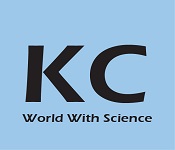Theme: COVID-19 outbreak: chemistry plays key role to fight against COVID- 19
Chromatography 2020
Chromatography 2020 welcomes professional chemists, researchers, professors, scientific communities, delegates, students, business professionals and executives from all over the world to attend the ‘10th World Congress on Chromatography’ during April 16-17, 2020 which includes prompt keynote presentations, Oral talks, Poster presentations and Exhibitions with the theme “Modernistic advancements, innovative applications and prospective approaches of Chromatography and analytical techniques”.
Chromatography 2020 conference could be a global platform for sharing and exploring new areas of research and development and to assess rising technologies in the field of chromatography. In Chromatography 2020, there will be many seminars, workshops and technical sessions take place in this conference series which will catch the attention of the professionals to attend the conference and it would enormously enrich our knowledge in understanding the current requirements of the global pharmaceutical industry. The expert will get an excellent opportunity to give many presentations and lectures on different topics.
Chromatography 2020 is a global annual event to discuss and learn about different types of chromatography and separation techniques in chemistry, Hyphenated Separation Techniques, Novel separation techniques, High Performance Liquid Chromatography, Various applications of chromatography and research related to these fields.
In the light of this theme, the conference series aim is to provide a forum for international researchers from various areas of analytical research, separation sciences, method development and validation by providing a platform for critical analysis of new data, and to share latest cutting-edge research findings and results about all aspects of separation techniques and chromatography.
Target Audience:
-
Analytical experts in chromatography
-
Research Heads from Research Centres
-
Analytical experts in Pharmaceutical and Life science
-
Directors of analytical chemistry department in various Universities and institutions
-
Industrial expertise working with various novel solid and liquid columns
-
Marketing teams of Industries with novel products to show case at the conference
-
Directors and Professors from Universities and Institutions
-
Post-doctoral and PhD students working on analytical method development
-
Theoretical scientists working on deriving analytical hypotheses
-
Relevant Graduate and Post graduate students
Track 1: Applications of Chromatography
Chromatography plays an important role in many pharmaceutical industries and also in the chemical and food industry. Environmental testing laboratories generally want to identify for very small quantities of contaminants such as PCBs in waste oil, and pesticides. The Environmental Protection Agency makes the method of chromatography to test drinking water and to monitor air quality. Pharmaceutical industries use this method both to prepare huge quantities of extremely pure materials, and also to analyze the purified compounds for trace contaminants. The other applications of chromatography especially HPLC is used in Protein Separation like Insulin Purification, Plasma Fractionation and Enzyme Purification. These separation techniques like chromatography gain importance in different kinds of companies, different departments like Fuel Industry, biotechnology, biochemical processes, and forensic science. Chromatography is used for quality analyses and checker in the food industry, by identifying and separating, analyzing additives, vitamins, preservatives, proteins, and amino acids. Chromatography like HPLC is used in DNA fingerprinting and bioinformatics.
Related Chromatography Conferences | Chromatography Meetings | Applications of Chromatography | Chemistry Conferences
Track 2: High Performance Liquid Chromatography
High Performance Liquid Chromatography (HPLC) is different and another type of column chromatography that pumps a sample mixture or analyte in a solvent at high pressure through a column with chromatographic packing material. HPLC has the ability to analyse, and separate compounds that would be present in any sample that can be dissolved in a liquid in trace concentrations. Because of this advantage, HPLC is used in a variety of industrial and scientific applications, such as pharmaceutical industry, environmental, forensic science, and chemicals. High Performance Liquid Chromatography has brought lot of advantages in the department of food analysis and also in the analysis of various fat soluble vitamins. HPLC is also used in DNA fingerprinting and bioinformatics.
Related Chromatography Conferences | Chromatography Meetings | Applications of Chromatography | Chemistry Conferences
Track 3: Advances in Gas Chromatography
Gas chromatography is a generally a word used to give information about the group of analytical separation techniques used to analyze volatile materials in the gas phase. In this chromatography, the components of a sample are dissolved in a solvent and vaporized which results in the separation of analytes by differentiating the sample between two phases. Gas chromatography is one of the important types of chromatography that does not use the mobile phase for reacting with the analyte. If the stationary phase consists of solid adsorbant, termed gas-solid chromatography, or a liquid on an inert support, termed gas-liquid chromatography (GLC). Gas Chromatography Mass Spectrometry (GC-MS) is the advanced technique of Gas Chromatography. Gas chromatography can be used in many different fields such as pharmaceutical industry, cosmetology and even environmental toxins. In Pharmaceutical Industry, GC is widely used because of its high efficiencies of separation power and also due to the precision and accuracy of the data from quantitative analyses of very complex mixtures.
Related Chromatography Conferences | Chromatography Meetings | Applications of Chromatography | Chemistry Conferences
Track 4: Types of Chromatography Techniques
Chromatography utilizes phase equilibrium partitioning principles to isolate proteins, nucleic acids, or little particles in complex blends in view of their varying connections with a stationary phase and a mobile phase. There are two main types of chromatography: Liquid chromatography (LC) and gas chromatography (GC). Both LC and GC can be utilized for either preparative or investigative applications. Chromatography strategies can likewise be ordered by the chromatography media chemistry the sorts of physicochemical associations used to segment components into the stationary and mobile phases thus accomplish separation..
Related Chromatography Conferences | Chromatography Meetings | Applications of Chromatography | Chemistry Conferences
Track 5: Analytical Chromatography
Analytical chromatography is routinely utilized as a part of industry and the scholarly world for partition, quantitation and ID of chemical or organic mixes. Chromatographic examination is additionally essential in the generation of pharmaceuticals, chemicals or food and beverages. A reinforced stage is a stationary stage that is covalently attached to the support particles or to within mass of the section tubing. A chromatogram is the visual yield of the chromatograph.
Related Chromatography Conferences | Chromatography Meetings | Applications of Chromatography | Chemistry Conferences
Track 6: Hyphenated Techniques in Chromatography
A Hyphenated technique is mix or coupling of two distinctive analytical techniques with the assistance of proper interface. Mostly chromatographic techniques are consolidated with spectroscopic techniques. The term hyphenated methods ranges from the blend of separation-separation, separation-identification & identification-identification techniques. The hyphenation of these strategies prompts better examination of the segments. Hyphenated methods indicate specificity and sensitivity.
Related Chromatography Conferences | Chromatography Meetings | Applications of Chromatography | Chemistry Conferences
Track 7: Novel Techniques in Chromatography
The method of separation is united type of unit procedure in most of the modern pharmaceutical, chemical and other process plants. Newer separation processes, like super critical fluid chromatography, paper chromatography hybridization assay chromatographic separation, etc., are gaining importance in modern days plants as novel separation processes. The Hyphenated Technique is increased and made advanced by uniting of a separation technique and an on-line spectroscopic detection technology. In this session latest update in the advancement of different hyphenated techniques, e.g., LC-FTIR, LC-NMR, CE-MS, GC-MS, Liquid Chromatography MS, etc. in the method of pre-isolation identification of crude extracts or fractions from different natural sources, separation and identification of natural products, chemotaxonomic studies and DNA fingerprinting are included.
Related Chromatography Conferences | Chromatography Meetings | Applications of Chromatography | Chemistry Conferences
Track 8: Multidimensional Chromatography
Both comprehensive two-dimensional gas chromatography (GCxGC) and comprehensive two-dimensional liquid chromatography (LCxLC) have developed as capable tools for expanding the peak limit of a solitary chromatographic analysis. Using orthogonal chromatographic systems, analytes can be isolated by two unique, successive maintenance systems; this procedure takes into consideration analytes to be isolated from different compounds that would regularly co-elute in a solitary dimensional separation. Endeavors at NIST are being coordinated toward the investigation of issues identified with quantitation by both GCxGC and LCxLC, esteem task of complex matrix Standard Reference Materials (SRMs), and non-targeted analysis.
Related Chromatography Conferences | Chromatography Meetings | Applications of Chromatography | Chemistry Conferences
Track 9: Separation Techniques in Chemistry
Special techniques in analytical chemistry also play an important role in the analysis of many chemical compounds. Physical separation techniques are the most common, least expensive and safest. Component separation is also relatively easy but tends to be more expensive. The specialty chemical and pharmaceutical industries are the primary users of component separation techniques. Component separation is only now being applied to hazardous wastes and many processes are still in the demonstration stage. Chemical separation techniques are the most expensive and pose the greatest potential hazard. In Hydrophobic Interaction Chromatography (HIC) the proteins are separated according to differences in the amount of exposed hydrophobic amino acids.
Related Chromatography Conferences | Chromatography Meetings | Applications of Chromatography | Chemistry Conferences
Track 10: Separation Mechanisms
The separation mechanism relies on contrasts in polarity between the diverse encourage segments. The more polar a particle, the all the more firmly it will be adsorbed by a polar stationary stage. Additionally, the more non-polar a particle, the all the more strongly it will be adsorbed by non-polar stationary phase. Amid a surface adsorption chromatography process, there is competition for stationary phase adsorption sites, between the materials to be separated and the mobile phase. Encourage atoms of low extremity invest relatively more time in the mobile phase than those particles that are exceptionally polar, which are held longer. In this way the segments of a blend are eluted arranged by increasing polarity.
Related Chromatography Conferences | Chromatography Meetings | Applications of Chromatography | Chemistry Conferences
Track 11: Electro-migration Techniques
Electro-migration techniques give the separation of analysed sample components attributable to outer voltage creating electro-kinetic phenomena electrophoresis and electro-osmosis. Considering the moderately large number of parameters managed amid electrophoretic investigations, it is basic to know their impact on the accomplished separation of analytes. Electro migration techniques, because of their tremendous explanatory potential, are broadly connected in the assurance of different substances. These techniques give partition of segments of an analysed sample owing to external producing electro-kinetic phenomena electrophoresis and electro-osmosis.
Related Chromatography Conferences | Chromatography Meetings | Applications of Chromatography | Chemistry Conferences
Track 12: Market Growth of Chromatography
The Chromatography industry is showing growth rapidly, with value expected to hit 228 billion dollars by 2016, up from 164 US billion dollars in the year of earlier 2010, growing annual growth of nearly 7, according to a recent industrial marketing research report. Geographically, global separation technique market has been segmented into four areas namely, North America, some parts of European region, Asia-Pacific and Rest of the World. The global gas chromatography market, valued at $2,583.6 million in earlier 2014, is possibility to march up to $3,605.1 US million by 2019 at a CAGR of 6.9%.This global market report categorizes the market into 3 wide segments, like, Instrumentation, Accessories & Consumables, and Reagents.
Related Chromatography Conferences | Chromatography Meetings | Applications of Chromatography | Chemistry Conferences
Track 13: Biomedical Chromatography
Biomedical Chromatography is a process in which a chemical mixture carried by a liquid or gas is separated into components as a result of differential distribution of the solutes as they flow around or over a stationary liquid or solid phase. There are two main categories of chromatography: preparative and analytical. A sample to be separated, when placed on the stationary section, will gradually move along in the same direction as the mobile phase. If a sample compound (or analyte) has no interaction with the stationary phase, it will run right through and come out of the system (elute) at the same rate as the mobile section. On the opposite hand, if an analyte has no interaction with the mobile phase, it will stick on to the stationary phase and never elute. Neither of these are good outcomes.
Track 14: Electrophoresis
Electrophoresis is used to characterize proteins, nucleic acid and any sub cellular particles. Main principle is based on the charge of the particles. Charged particles migrate in the applied electric field. Positively charged ions migrate towards a negative conductor and negatively-charged ions migrate toward a positive conductor.
Related Chromatography Conferences | Chromatography Meetings | Applications of Chromatography | Chemistry Conferences
Track 15: Chromatography in Pharmacy & Pharmaceutical
One of the most characteristic features of the development in the methodology of pharmaceutical and biomedical analysis is that HPLC became undoubtedly the most important analytical method for identification and quantification of drugs, either in their active pharmaceutical ingredient or in their formulations during the process of their discovery, development and manufacturing.
Drug development starts with the discovery of a molecule with a therapeutic value. This can be done by high throughput screening during which separations by fast or ultra-fast HPLC are performed. At the discovery stage there can be also characterizing synthetic or natural products. Drug metabolism and pharmacokinetics (DMPK) is the step where the candidate compounds for drug are tested for their metabolism and pharmacokinetics. The studies involve use of LC-MS or LC-MS/MS. The goal in the discovery stage of drug development is to discover a new, safe and active chemical entity (NCE) that will become medication for diseases
Related Chromatography Conferences | Chromatography Meetings | Applications of Chromatography | Chemistry Conferences
Related Societies:
Europe: The International Association for the Advancement of High Performance Thin Layer Chromatography (HPTLC Association); European Association for Chemical and Molecular Sciences (EuCheMS); European Society for Separation Science Italian Chemical Society ; Swedish Mass Spectrometry Society; Swedish Chemical Society; Austrian Society for Analytical Chemistry; Cooperation on International Traceability in Analytical Chemistry (CITAC); Chromatography and Electrophoresis Group of the Czech Chemical Society; Separation Sciences Foundation of Denmark
USA: California Separation Science Society; American Organization of Analytical Chemists International (AOAC);Brazilian Society of Pharmacology and Experimental Therapeutics; International Isotope Society; International Society of Heterocyclic Chemistry; Mexican Chemical Society
Asia- Pacific: Chromatographic Society of India; The Japan Society for Analytical Chemistry (JSAC); Australian and New Zealand Society for Mass Spectrometry; Royal Australian Chemical Institute; Egyptian Chemical Society
European Market Value of Chromatography
The European liquid chromatography systems report defines and segments the concerned market in Europe with analysis and forecast of revenue. The liquid chromatography systems market in Europe was valued at $ 1034.9 million in 2013, and is estimated to grow to $1360.2 million by 2018, at a CAGR of 5.6% from 2013 to 2019.Europe is the second-largest market for liquid chromatography systems, which is expected to grow at a CAGR of 5.6% from 2013 to 2018.Germany has the largest share in the European liquid chromatography systems, and is expected to grow at a CAGR of 5.7% from 2013 to 2018, followed by France, which is expected to grow at the same CAGR as that of Germany. The gas chromatography systems market in Europe is valued at $191.1 million in 2013, and is estimated to grow to around $247.6 million by 2018, at a CAGR of 5.3% from 2013 to 2018.Europe is the second-largest market poised to reach $247.55 million by 2018, and is estimated to grow at a CAGR of 5.3% from 2013 to 2018.
Global Market Value of Chromatography
Chromatography has evolved over the years and become a method of choice for analysis, identification, and purification of a wide variety of compounds. Chromatography work is growing rapidly, with value expected to hit $228 billion by 2017, up from $164 billion in the year 2018, marking annual growth of nearly 7%, according to a recent industry research report. The global gas chromatography market, valued at $2,583.6 million in 2017, is expected to reach $3,605.1 million by 2020 at a CAGR of 6.9%.This report categorizes the market into three broad segments, namely, Instrumentation, Accessories & Consumables, and Reagents. The market for gas chromatography instrumentation is expected to grow at the highest CAGR of 5.7% from 2018 to reach $883.5 million by 2020. The largest chromatography market is in North America followed by Europe-with the two continents having 70% of the market-then Asia. It is anticipated that whilst North America and Europe will continue to lead the market over the next five years, the chromatography market in Asia will expand and increase its market share.
Companies Mentioned:
Agilent Technologies, Avantor Performance Materials LLC,Bio-Rad Laboratories Inc,GENERAL ELECTRIC,Kanto Kagaku Singapore Pte Ltd, LobaChemie Pvt. Ltd ,Merck KGaA,Mitsubishi Chemical Corporation,Regis Technologies Inc.
Chromatography Market, by Region:
-
North America
- U.S.
- Canada
-
Europe
- Germany
- UK
- France
- Italy
- Spain
-
Asia Pacific
- Japan
- China
-
Latin America
- Brazil
- Mexico
-
Middle East and Africa (MEA)
- South Africa
Conference Highlights
- Applications of Chromatography
- High Performance Liquid Chromatography
- Advances in Gas Chromatography
- Types of Chromatography Techniques
- Analytical Chromatography
- Hyphenated Techniques in Chromatography
- Novel Techniques in Chromatography
- Multidimensional chromatography
- Separation Techniques in Chemistry
- Electromigration Techniques
- Market Growth of Chromatography
- Biomedical Chromatography
- Electrophoresis
- Chromatography in Pharmacy & Pharmaceutical
To share your views and research, please click here to register for the Conference.
To Collaborate Scientific Professionals around the World
| Conference Date | April 16-17, 2020 | ||
| Sponsors & Exhibitors |
|
||
| Speaker Opportunity Closed | Day 1 | ||
| Poster Opportunity Closed | Click Here to View | ||
Useful Links
Special Issues
All accepted abstracts will be published in respective Our International Journals.
- Journal of Chromatography & Separation Techniques
- Journal of Analytical & Bioanalytical Techniques
- Research & Reviews: Journal of Pharmaceutical Analysis
Abstracts will be provided with Digital Object Identifier by










